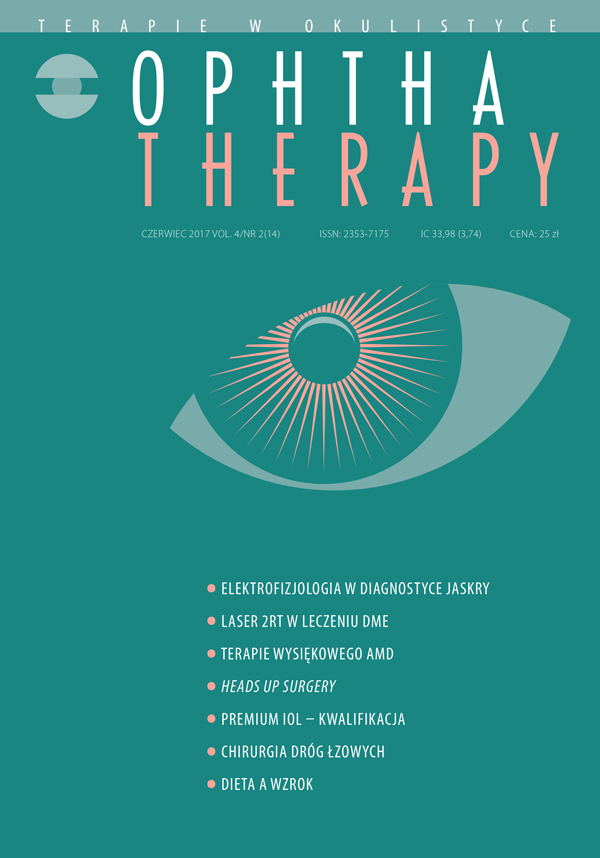Scheimpflug camera device for preoperative assessment in candidates for toric and multifocal intraocular lenses
Main Article Content
Abstract
Scheimpflug camera devices enable 3-dimensional analysis of the cornea and anterior segment. Evaluation of the posterior corneal curvature, total corneal astigmatism and corneal higher order aberrations, including spherical aberration, are important for patient selection for toric and multifocal intraocular lenses. The magnitude and axis of posterior astigmatism influence the total corneal refractive power. Assessment of the total corneal power is particularly important in eyes with corneal abnormalities such as keratoconus or in eyes after corneal refractive laser surgery.
Downloads
Article Details

This work is licensed under a Creative Commons Attribution-NonCommercial-NoDerivatives 4.0 International License.
Copyright: © Medical Education sp. z o.o. License allowing third parties to copy and redistribute the material in any medium or format and to remix, transform, and build upon the material, provided the original work is properly cited and states its license.
Address reprint requests to: Medical Education, Marcin Kuźma (marcin.kuzma@mededu.pl)
References
2. Pentacam User Guide. System for measuring and analysing the front part of the eye. User Guide Pentacam®/Pentacam® HR/Pentacam® AXL. Online: https://www.pentacam.com/int/ophthalmologist-withpentacam/service/interpretation-guide.html.
3. Gilani F, Cortese M, Ambrosio RR Jr et al. Comprehensive anterior segment normal values generated by rotating Scheimpflug tomography. J Cataract Refract Surg. 2013; 39: 1707-12.
4. Reitblat O, Levy A, Kleinmann G et al. Effect of posterior corneal astigmatism on power calculation and alignment of toric intraocular lenses: Comparison of methodologies. J Cataract Refract Surg. 2016; 42(2): 217-25.
5. Koch DD, Ali SF, Weikert M et al. Contribution of posterior corneal astigmatism to total corneal astigmatism. J Cataract Refract Surg. 2012; 38: 2080-7.
6. Koch DD, Jenkins RB, Weikert MP et al. Correcting astigmatism with toric intraocular lenses, effect of posterior corneal astigmatism. J Cataract Refract Surg. 2013; 39(12): 1803-9.
7. Koch DD. The posterior cornea: hiding in plain sight. Ophthalmology. 2015; 122(6): 1070-1.
8. Abulafia A, Hill WE, Franchina M et al. Comparison of Methods to Predict Residual Astigmatism After Intraocular Lens Implantation. J Refract Surg. 2015; 31(10): 699-707.
9. Ho JD, Tsai CY, Liou SW. Accuracy of corneal astigmatism estimation by neglecting the posterior corneal surface measurement. Am J Ophthalmol. 2009; 147: 788-95.
10. Olsen T, Hoffmann P. C constant: new concept for ray tracing-assisted intraocular lens power calculation. J Cataract Refract Surg. 2014; 40(5): 764-73.
11. Hoffmann PC, Wahl J, Hutz WW et al. A ray tracing approach to calculate toric intracoular lenses. J Refract Surg. 2013; 29(6): 402-8.
12. Hayashi K, Manabe S, Yoshida M et al. Effect of astigmatism on visual acuity in eyes with a diffractive multifocal intraocular lens. J Cataract Refract Surg. 2010; 36(8): 1323-9.

